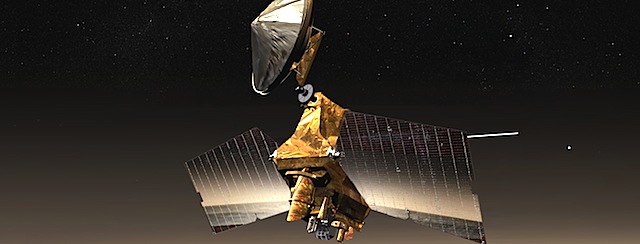 Tables stored in flash memory aboard NASA’s Mars Reconnaissance Orbiter (MRO) tell locations of Earth and the sun for the past 10 years, but not their locations next year. That needs to be changed. Carefully.
Tables stored in flash memory aboard NASA’s Mars Reconnaissance Orbiter (MRO) tell locations of Earth and the sun for the past 10 years, but not their locations next year. That needs to be changed. Carefully.
The long-lived orbiter relies on these tables to recover in the event of an unplanned computer shutdown. When the spacecraft computer reboots, it checks to see where it should position the antenna for communication and, even more critically, where it should position the solar arrays for power. Flash memory is “nonvolatile” — meaning that it retains information even while the power is off — so it works well for this backup role.
The tables were loaded before the spacecraft’s Aug. 12, 2005, launch and they cover location information through July 12, 2016. To be safe, the mission team plans to begin updating them next week. Doing so will require intentionally rebooting the onboard computer during a one-week suspension of MRO’s science observations and communication relay duty. Both of NASA’s active Mars rovers will use a different NASA Mars orbiter, Odyssey, for relaying their data to Earth while MRO is out of service.
Sixteen times since launch, MRO has experienced unplanned reboots that relied on the stored tables for recovery of the spacecraft. Managers anticipate that such events will continue to happen in coming years. [More at link]








